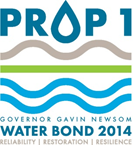LOS ANGELES FUNDING AREA
Proposition 1

In 2014, voters approved Proposition 1, “The Water Quality, Supply, and Infrastructure Improvement Act”, to meet the state’s long-term water needs. Prop 1 funds are managed by the California Department of Water Resources.
WaterTalks LA Funding Area Statistics
Outreach and Education Provided:
Needs Assessment:
Top 3 Water-Related Concerns Within Communities
GLAC
USCR
Ventura
Innovative Tools Created
New models of community-based water infrastructure project design:
In the GLAC and USCR Regions, data from the Needs Assessment was reviewed by a team of engineers, community organizers, tribal representatives, and program designers to brainstorm projects that would address the needs identified. These were developed into simple sketches and shared with the broad coalition of community organizations, who discussed the projects, suggested revisions and ultimately prioritized projects to move forward for technical assistance. This approach placed community needs at the forefront of project and program design.
In the WCVC region a WaterTalks committee was formed, comprised of representatives from local water agencies, municipalities, non-governmental entities and members of underserved communities. Upon reviewing the results of the Needs Assessments, committee members submitted project ideas during a formal RFP process. The consultant teams were available to provide assistance in developing project concepts as needed. This assistance helped projects proponents develop an application for a variety of funding sources, including the Prop.1 IRWM Implementation Grant, or for further technical assistance and/or project funding available in the Prop. 1 DACI grant.
Consensus process forged between multiple IRWM Regions:
In the past, the 3 IRWM regions faced challenges agreeing on an equitable distribution of IRWM Implementation Grant funds and resulted in competing with one another for funds, with unsatisfactory results. In 2018, the WaterTalks Task Force developed a simple allocation system that began with a percentage split of funds as a non-binding starting place (50% GLAC, 25% USCR, and 25% WCVC), and then worked through proposals from consultants to refine the numbers. Regional agencies were then able to adopt this approach in 2022 for allocation of project funds from Prop 1 Round 2 IRWM , creating a means to drive more funds to “disadvantaged communities” than was seen historically.
Data Hub:
Users can search for, view, and download documents, data, map layers, and access StoryMaps that support the implementation of WaterTalks in the Los Angeles-Ventura Funding Area. Through the hub, the public and interested parties have 24-hour access free-of-charge to geospatial data available in Esri shapefile, KML, CSV, and GeoJSON formats, as well as other data products. Visit the Data Hub.
TAPPED:
The decision support tool allows for project data exploration, project ranking, and project evaluation by combining project description data, evaluation criteria, and reference data. It was developed for WaterTalks by a team led by the CSU Water Resources and Policy Initiative, and used in making funding decisions for projects recommended for Proposition 1 Round 2 IRWM Funding in 2022. It can be adapted for future use in numerous ways around project-based prioritization.
LA Funding Area DACIP Strengths & Needs Assessment Executive Summary
This Executive Summary provides a quick glance at key information contained in the Greater Los Angeles County, Upper Santa Clara River, and Watersheds Coalition of Ventura County Needs Assessment reports.
View the Los Angeles – Ventura Funding Area DACIP Strengths & Needs Assessment Executive Summary
WaterTalks Final Report
Funding for the Watertalks program came to a close at the end of 2023. A Final Report was prepared to summarize and encapsulate the program’s breadth of accomplishments, documents and data created during its 5 year operation.
Partners
NGO Partners:
Government Partners:
Projects
25 Projects Identified for Technical Assistance and the Community Served:
Total assigned funding: $2,348,000
12 Projects Awarded Implementation Funding and the Communities Benefiting:
Total awarded: $10,902,000
